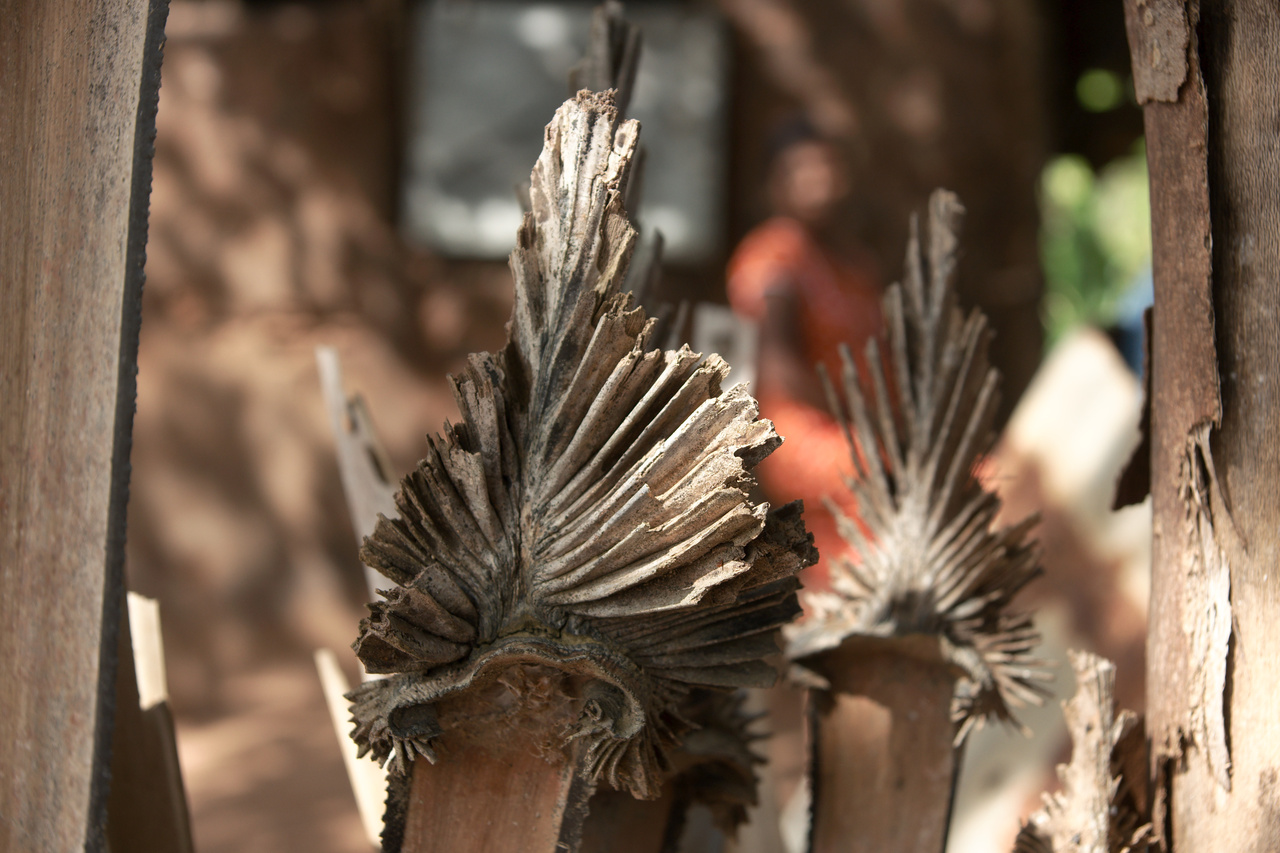

After Friday’s tragic post it was hard for me to find an adequate topic for today.
The fences in Sri Lanka are continously fascinating me (therefore there’s already a gallery of them), and this last visit I found not only those dangerously looking fencepost-tops, made from palmyrah stalks, but also a young palmyrah plant, showcasing this perfect star-shaped leaf, which’s caulis later can be used for the fencing.
And as always – click on the images to see them much larger! This should work throughout the whole blog and also the galleries.
That’s quite an interesting fact. I would have never thought one does festpost-tops out of a typical German living room plant ;-).
I especially like the first photo – it has almost the texture of folded paper or cardboard. And the shape reminds me of many Ganesha or Shiva statues with the flaming “corona”.
Martina, those Palmyrah stalks become incredibly hard, albeit probably only when this plants grows to its normal size under a tropical sun. I found these shapes extraordinarily beautiful and can not understand why all families try to replace them with corrugated tin sheets as soon as possible.
Fascinating photo and story. At first glance, I thought they were decorative rather than protective additions and agree with Martina that they do, indeed, resemble paper. Just out of curiosity: did you happen to notice how the plants were attached to the wood? Do you suppose the fence owners originally used the entire plant with its sharp points? It seems the pointed tips would be a much more effective deterrent.
Friday’s post on the Mosque murders was informative and tragic. Your photo is of National Geographic quality in subject, composition and technique.
Martha, what you see here are complete stalks used for the fencing. Complete leaves are used somtimes as blinds – beautiful ones, like here: http://markus-spring.info/wp/files/gallery/battifences/thumbs/thumbs_dsc02643g.jpg But in tropical rains the tips of the leafs soon loose their deterring quality.
—
Thanks for the praise of the Mosque images. I tried my best to capture the mood of this place, the mixture of past terror and enduring prayers.